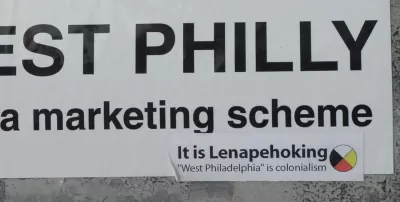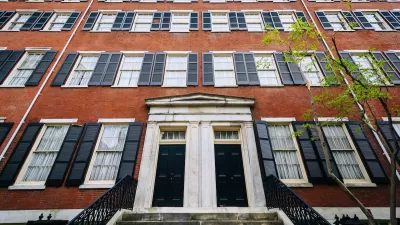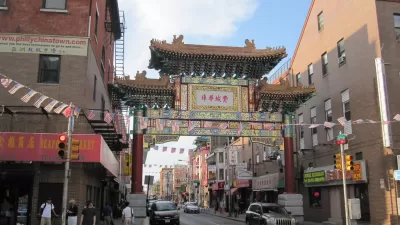Describing the Federal Reserve Bank of Philadelphia's recent study on gentrification in that city.

This month, the Federal Reserve Bank of Philadelphia came out with a study on "Gentrification and Residential Mobility in Philadelphia." This paper included some findings about displacement (or the lack thereof) in gentrifying neighborhoods.
The study described 56 Philadelphia census tracts as "gentrifying" based on a variety of criteria. Some of the questions the study sought to answer were:
- Are poorer residents of these tracts more likely to leave these neighborhoods than other city neighborhoods? Persons with the lowest credit scores (the study's surrogate for poverty) were about equally likely to leave gentrifying and non-gentrifying tracts. So if moving equals gentrification-related displacement, it does not seem especially frequent in gentrifying areas. Similarly, longtime residents (those living in the tract for over five years) were actually less likely to leave gentrifying tracts than other city neighborhoods.
- Were low-credit-score movers from gentrifying tracts forced into suburbia? A map of movers showed that high-credit-score movers were scattered throughout the region, while almost all low-credit score movers stayed within the city of Philadelphia. So it appears that despite media coverage of suburban poverty, few poor people moved from gentrifying areas to suburbs. (Of course, this pattern may be less true in high-cost central cities like New York and Washington.)
- Did low-scoring movers from gentrifying tracts shift to areas poorer than those gentrifying tracts? The study's answer to that question: No. The average low-score mover moved from a census tract with a median household income of $33,000 to one with a median income of $44,000. When intercity movers are excluded, this gap is narrower; even so, the movers wound up in areas with about a 10 percent higher median income than that of their former home (from $32,000 to $35,600). On the other hand, the "receiving" neighborhoods had lower home values than the gentrifying tracts, and fairly similar crime rates, and movers from some neighborhoods were less likely to move to richer areas. (Postscript: I also should have noted that intracity low-credit-score movers from non-gentrifying tracts improved their neighborhood status to a greater extent than those from gentrifying tracts; the average mover in this category left an area with a median income of just over $26,000 and moved to an area with a median income of almost $32,000- a 20 percent increase but still a lower median income, I note, than the movers from gentrifying tracts. This point seems to have created some confusion among readers: because movers from gentrifying tracts improved neighborhood quality to a lesser degree than movers from nongentrifying tracts, readers may have believed that movers from gentrifying tracts were objectively worse off than they had been had they not moved.)
In sum, it appears that at least in Philadelphia, many gentrification-related stereotypes are not consistently true. Low-credit score residents of gentrifying tracts were not especially mobile, nor did they always move to poorer areas when they did move.

Alabama: Trump Terminates Settlements for Black Communities Harmed By Raw Sewage
Trump deemed the landmark civil rights agreement “illegal DEI and environmental justice policy.”

Planetizen Federal Action Tracker
A weekly monitor of how Trump’s orders and actions are impacting planners and planning in America.

The 120 Year Old Tiny Home Villages That Sheltered San Francisco’s Earthquake Refugees
More than a century ago, San Francisco mobilized to house thousands of residents displaced by the 1906 earthquake. Could their strategy offer a model for the present?

Ken Jennings Launches Transit Web Series
The Jeopardy champ wants you to ride public transit.

BLM To Rescind Public Lands Rule
The change will downgrade conservation, once again putting federal land at risk for mining and other extractive uses.

Indy Neighborhood Group Builds Temporary Multi-Use Path
Community members, aided in part by funding from the city, repurposed a vehicle lane to create a protected bike and pedestrian path for the summer season.
Urban Design for Planners 1: Software Tools
This six-course series explores essential urban design concepts using open source software and equips planners with the tools they need to participate fully in the urban design process.
Planning for Universal Design
Learn the tools for implementing Universal Design in planning regulations.
Clanton & Associates, Inc.
Jessamine County Fiscal Court
Institute for Housing and Urban Development Studies (IHS)
City of Grandview
Harvard GSD Executive Education
Toledo-Lucas County Plan Commissions
Salt Lake City
NYU Wagner Graduate School of Public Service






























